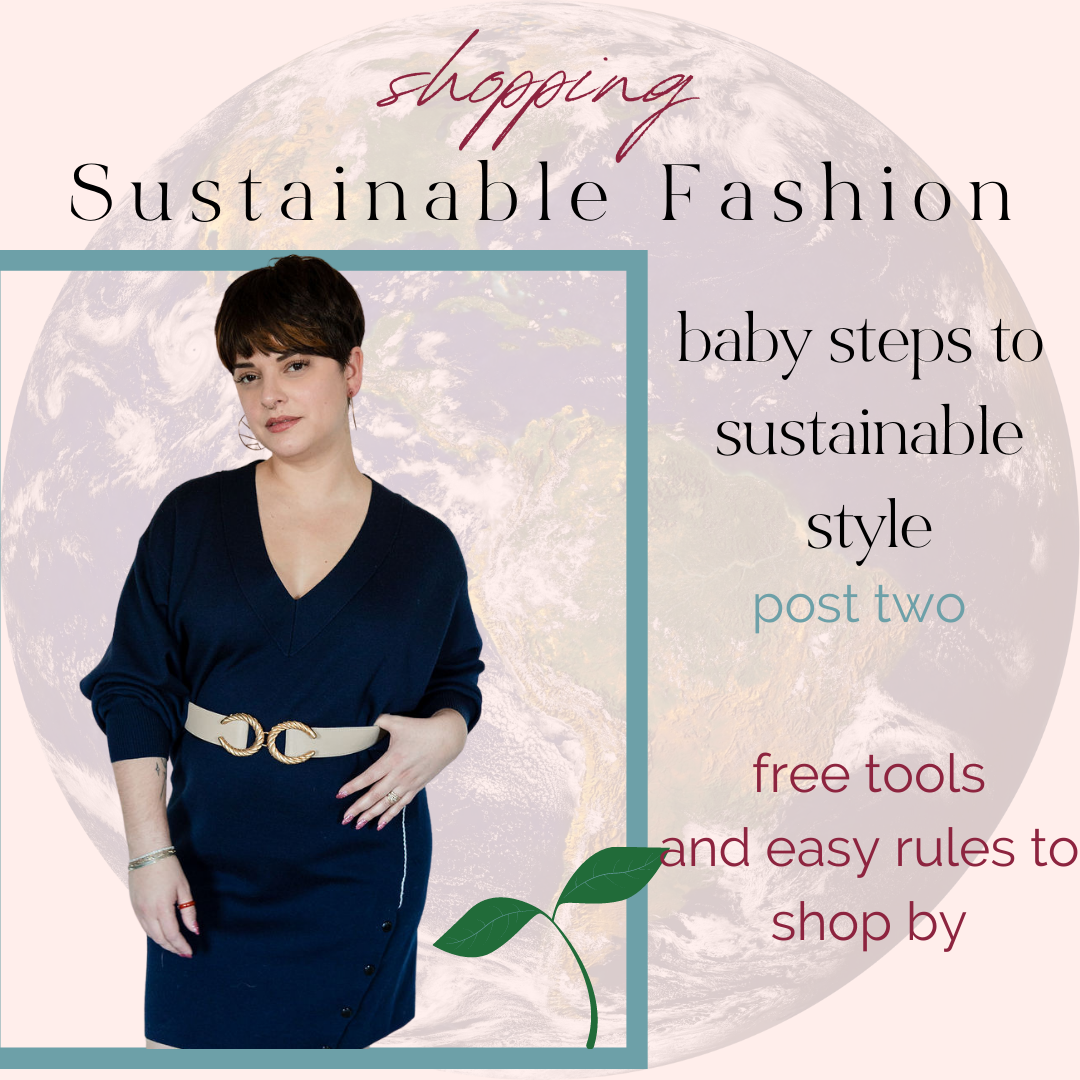Welcome to post #2 in my sustainable style series! To make sustainable and ethical fashion feel more accessible, I’m doing a series of posts on how you can easily start to make your closet more eco-friendly, and without changing your entire lifestyle or throwing out all your clothes.
This post provides you with some simple tools you can use while shopping and easy rules to help you make more positively sustainable decisions on certain items. (Which, added bonus: this will also save you $$$$ while shopping!)
Tools
Good on You (Website Directory / Mobile App)
This is the ultimate tool that gives you information on sustainability for individual brands. While you’re shopping online or in-store, just type in the name of the brand into their search bar and you’ll immediately get results on that brand’s ranking. If you’re searching for a specific category (like underwear), they also publish amazing lists of brands that are solid alternatives to the super recognizable fast fashion brands.
ThredUp’s Fashion Footprint Quiz
If you want to aggressively (but positively!) reset your shopping habits, this is a great quiz to take to figure out your current fashion-related impacts on the environment. Just remember that everyone needs to start improvement from somewhere, so don’t freak out if you feel a little attacked by your results!!
EcoCart Browser Extension (Google Chrome)
Contributing to carbon neutral initiatives starts as easily as your current online shopping habits. Installing the EcoCart browser extension provides the organization with a commission to put toward carbon neutral projects, and the prices of your items don’t change. EcoCart partners with over 10,000 ecommerce retailers, so your impact can be huge! Pick a specific initiative that speaks to you (like preserving trees in a specific region) or just contribute to their overall carbon neutral projects.
Rules
For buying new
Do I see myself wearing this no less than 30 times?
This should shock you: in 2019, the Wall Street Journal reported that the average garment is only worn seven times before being discarded and most likely ending up in a landfill. So this is definitely another reason to think carefully before spending your money on new clothing!!
The reality is that sustainable fashion brands can be beyond a lot of buyers’ budgets. So if you don’t have the budget to shop from specific brands, think about both the versatility and longevity of the items you’re looking at within your budget. Shopping fast fashion can become significantly more ethical if you commit to buying a piece that can be worn a minimum of 30 times, especially if you take extra good care of it to make it last longer!
For basics, think about whether you can wear it 2-3 times per month for at least 1 year!
For seasonal items, think about whether you can wear it 15 times per season for 2 years.
Does this need to be dry cleaned?
Dry cleaning requires the use of chemicals that can be extremely toxic and stay in the surrounding environment for long periods of time, especially common PCE solvents. Though more eco-friendly dry cleaning solvents are becoming more widely available, the most sustainable practice is to minimize your trips to the dry cleaner as much as possible, especially for garments that require more regular cleaning, like shirts. For your current wardrobe, try to take measures to extend time between cleanings for garments like suit separates and outerwear.
Can I immediately think of three outfits/looks that make me feel good that feature this new piece?
Even if it seems like love at first sight, think about it for just a little longer. If you’re holding a pair of pants or a sweater, and you can’t think of three different ways to wear them using pieces that you already have, it’s probably not worth purchasing at that exact moment. If you can’t stop thinking about it, save the item’s link (or find a close replacement) and see if you feel the same way in a month.
For your current closet
Make clothing last by washing it less!
You probably already know that you don’t have to wash your jeans after every wear, and if you didn’t, now you know! Also, think about your outerwear, like cardigans, blazers, jackets, and sweatshirts. Because you are already layering with them, they’re not making direct contact with your body, so you won’t need to wash it as much! Less frequent washing saves water and helps your clothes to last much longer.
Create a seasonal capsule wardrobe.
Some upfront time and organization can help you realize that you can wear what you currently have in far more ways than what you might come up with on the fly.
Set the intention to really enjoy what you currently have and get creative with putting together outfits only with items from your closet for at least a month. Even if you are one of my 1:1 clients, we can spend a month focusing on outfit pairing rather than doing an at-home shopping session. With each session, whether it’s virtual or in person, we focus on maximizing your pieces, and choose items that have a wide range of versatility.
In Case You Missed It:
In addition to following some pretty simple and sustainable (ha, see what I did there??) rules for how you shop and use what’s in your current closet, I have a whole separate post on sustainable brands to shop if you’re on the hunt for some new clothes. (And I picked some favorite pieces too!)
